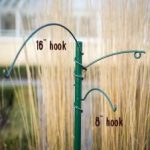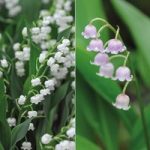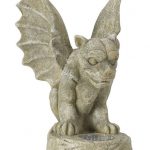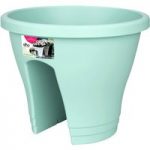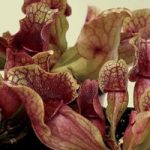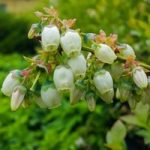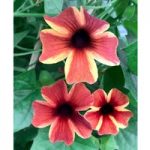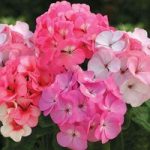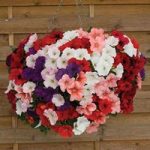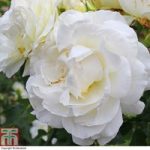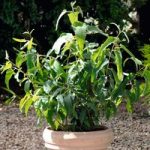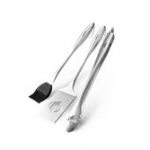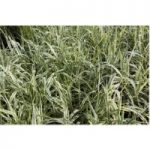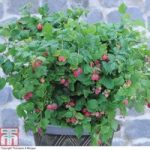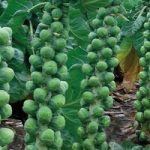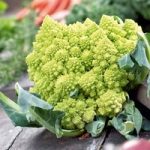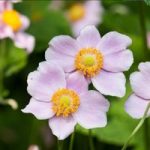Category Archives: Plants & Seeds
Cephalotaxus harringtonia ‘Korean Gold’
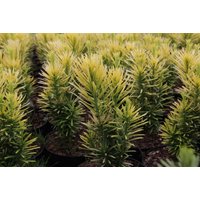 Cephalotaxus harringtonia ‘Korean Gold’ is a slow-growing conifer with a Yew-like appearance. Commonly known as the Plum Yew, it enjoys a cool, moist position and makes a useful specimen plant for shaded woodland areas. ‘Korean Gold’ is a columnar variety with a compact narrow growth habit. With long, gold-tipped needles that mature to green in
Cephalotaxus harringtonia ‘Korean Gold’ is a slow-growing conifer with a Yew-like appearance. Commonly known as the Plum Yew, it enjoys a cool, moist position and makes a useful specimen plant for shaded woodland areas. ‘Korean Gold’ is a columnar variety with a compact narrow growth habit. With long, gold-tipped needles that mature to green in
Chaenomeles ‘Friesdorfer Typ 205’
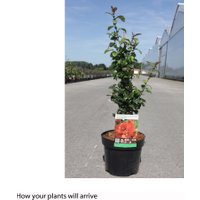 Chaenomeles ‘Friesdorfer Typ 205’ is a colourful flowering quince, sporting bright red blooms from early spring ? even before the foliage appears! Its spiny stems are cloaked in unremarkable green foliage throughout the summer, but the developing fruits ripen to golden yellow for a wonderful autumn display. ‘Friesdorfer Typ 205’ makes a superb specimen for
Chaenomeles ‘Friesdorfer Typ 205’ is a colourful flowering quince, sporting bright red blooms from early spring ? even before the foliage appears! Its spiny stems are cloaked in unremarkable green foliage throughout the summer, but the developing fruits ripen to golden yellow for a wonderful autumn display. ‘Friesdorfer Typ 205’ makes a superb specimen for
Chaenomeles speciosa ‘Hot Fire’
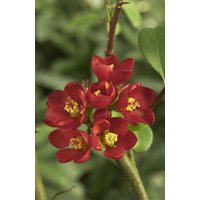 Chaenomeles speciosa ‘Hot Fire’ produces crimson-red flowers early in spring, on bare, spiny stems. The rounded green foliage that follows on provides a lovely backdrop for showy, autumn fruits. Flowering Quince are ideal specimens for the border, and with a little training make superb wall shrubs. Their nectar-rich blooms are loved by pollinating insects, making
Chaenomeles speciosa ‘Hot Fire’ produces crimson-red flowers early in spring, on bare, spiny stems. The rounded green foliage that follows on provides a lovely backdrop for showy, autumn fruits. Flowering Quince are ideal specimens for the border, and with a little training make superb wall shrubs. Their nectar-rich blooms are loved by pollinating insects, making
Chaenomeles x superba ‘Crimson and Gold’
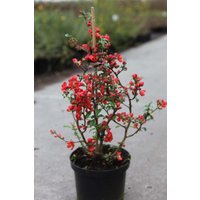 The glorious flowers of this Japonica are a joy to behold, as they create an eye-catching display of colour early in the spring, when much of the garden is still in its winter dormancy. Chaenomeles x superba ‘Crimson and Gold’ is a mass of bright red blooms, each with contrasting golden anthers, attractive to pollinating
The glorious flowers of this Japonica are a joy to behold, as they create an eye-catching display of colour early in the spring, when much of the garden is still in its winter dormancy. Chaenomeles x superba ‘Crimson and Gold’ is a mass of bright red blooms, each with contrasting golden anthers, attractive to pollinating
Chaenomeles x superba ‘Fire Dance’
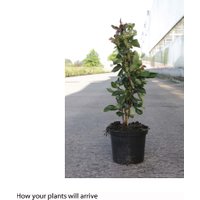 Grow it against a wall, and this Flowering Quince will quickly become a much loved herald of spring as it is smothered in a mass of fiery orange-red blooms every March. Glossy green foliage follows the flowers, and in autumn, gorgeous golden-green fruits hang from the branches. Being more upright than other varieties, Chaenomeles x
Grow it against a wall, and this Flowering Quince will quickly become a much loved herald of spring as it is smothered in a mass of fiery orange-red blooms every March. Glossy green foliage follows the flowers, and in autumn, gorgeous golden-green fruits hang from the branches. Being more upright than other varieties, Chaenomeles x
Caryopteris x clandonensis ‘Worcester Gold’
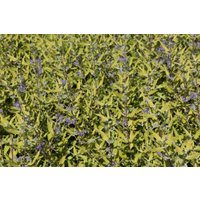 Caryopteris x clandonensis ‘Worcester Gold’ is a spectacular variety ? its golden foliage and intense blue flowers make for a startling combination! Even before the flowers appear, ‘Worcester Gold’ stands out with its vibrant foliage and has a low, spreading habit that remains manageable even in smaller gardens. By late summer, the nectar-rich blooms create
Caryopteris x clandonensis ‘Worcester Gold’ is a spectacular variety ? its golden foliage and intense blue flowers make for a startling combination! Even before the flowers appear, ‘Worcester Gold’ stands out with its vibrant foliage and has a low, spreading habit that remains manageable even in smaller gardens. By late summer, the nectar-rich blooms create
Ceanothus ‘Marie Bleu’
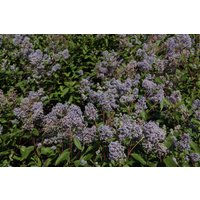 With its long flowering period and compact habit, Ceanothus ‘Marie Bleu’ is ideal for rockeries, cottage gardens and wildlife gardens ? where it will attract pollinating insects. This neat, rounded specimen forms a good ground cover or low hedging. Glossy green, deciduous foliage cloaks its well-branched stems throughout the summer. A haze of lilac blue
With its long flowering period and compact habit, Ceanothus ‘Marie Bleu’ is ideal for rockeries, cottage gardens and wildlife gardens ? where it will attract pollinating insects. This neat, rounded specimen forms a good ground cover or low hedging. Glossy green, deciduous foliage cloaks its well-branched stems throughout the summer. A haze of lilac blue
Ceanothus ‘Marie-rose’
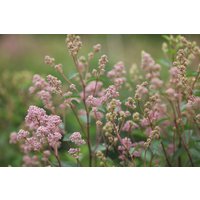 Ceanothus ‘Marie-rose’ is a pretty California Lilac, boasting masses of hazy-pink blooms against a backdrop of glossy green foliage. Its purple stems form a medium-sized shrub that makes a lovely feature trained against a wall, or at the back of borders. Fluffy looking flowers attract pollinating insects, and are then followed by attractive red seed
Ceanothus ‘Marie-rose’ is a pretty California Lilac, boasting masses of hazy-pink blooms against a backdrop of glossy green foliage. Its purple stems form a medium-sized shrub that makes a lovely feature trained against a wall, or at the back of borders. Fluffy looking flowers attract pollinating insects, and are then followed by attractive red seed
Caragana pygmaea
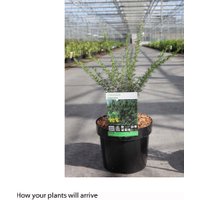 Caragana pygmaea is spiny and low growing, and makes a superb intruder-proof ground cover or low hedge. Small, rounded leaves cover its stems, providing an attractive, fine texture in the garden. Yellow, pea-like flowers dangle beneath the branches from late spring, followed by small pods in autumn. Tough and resilient, Caragana pygmaea withstands dry soils
Caragana pygmaea is spiny and low growing, and makes a superb intruder-proof ground cover or low hedge. Small, rounded leaves cover its stems, providing an attractive, fine texture in the garden. Yellow, pea-like flowers dangle beneath the branches from late spring, followed by small pods in autumn. Tough and resilient, Caragana pygmaea withstands dry soils
Buddleja davidii ‘Nanho Blue’
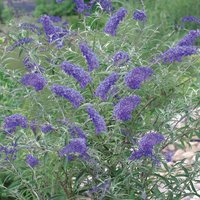 Buddleja davidii ‘Nanho Blue’ features scented, nectar rich, lavender blue flowers above silvery green foliage. This quick growing Butterfly Bush attracts a mass of pollinating insects and butterflies to your garden from June to September, as well as being tough and reliable. Height and Spread: 150cm (59).
Buddleja davidii ‘Nanho Blue’ features scented, nectar rich, lavender blue flowers above silvery green foliage. This quick growing Butterfly Bush attracts a mass of pollinating insects and butterflies to your garden from June to September, as well as being tough and reliable. Height and Spread: 150cm (59).
Buddleja davidii ‘Royal Red’
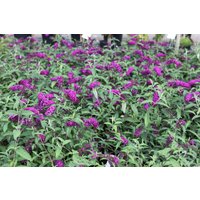 Buddleja davidii ‘Royal Red’ is the perfect addition to any wildlife area, attracting butterflies and a host of other pollinating insects with its delicious honey fragrance, especially after a hard pruning. Awarded an RHS AGM, the purple-red panicles of this Butterfly Bush reach a grand size, making this variety perfect as a larger specimen shrub
Buddleja davidii ‘Royal Red’ is the perfect addition to any wildlife area, attracting butterflies and a host of other pollinating insects with its delicious honey fragrance, especially after a hard pruning. Awarded an RHS AGM, the purple-red panicles of this Butterfly Bush reach a grand size, making this variety perfect as a larger specimen shrub
Buddleja davidii ‘Santana’
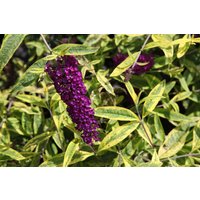 Buddleja davidii ‘Santana’ bears maroon red flowers which contrast spectacularly with the attractive variegated foliage; the slender sage green leaves each feature a wide yellow margin. With plenty of space, this deciduous shrub will produce an impressive, long lasting display right through until autumn. As the name suggests, this Butterfly Bush will attract a range
Buddleja davidii ‘Santana’ bears maroon red flowers which contrast spectacularly with the attractive variegated foliage; the slender sage green leaves each feature a wide yellow margin. With plenty of space, this deciduous shrub will produce an impressive, long lasting display right through until autumn. As the name suggests, this Butterfly Bush will attract a range
Buddleja davidii ‘White Profusion’
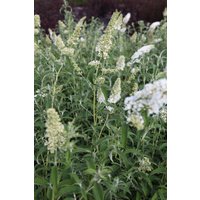 Buddleja davidii ‘White Profusion’ produces giant panicles packed with tiny white blooms that swathe the end of each stem between July and September. This classic deciduous Butterfly Bush holds an RHS AGM and is perhaps more elegant than some of the bigger varieties, with a pleasant bushy habit and upright blooms. Buddleja ‘White Profusion’ will
Buddleja davidii ‘White Profusion’ produces giant panicles packed with tiny white blooms that swathe the end of each stem between July and September. This classic deciduous Butterfly Bush holds an RHS AGM and is perhaps more elegant than some of the bigger varieties, with a pleasant bushy habit and upright blooms. Buddleja ‘White Profusion’ will
Carolina Allspice
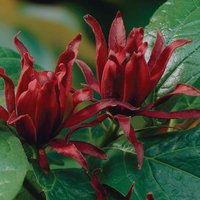 This unique shrub seems to be one of gardening’s best kept secrets, but hopefully not for much longer. It’s a hardy, adaptable and trouble-free garden shrub. And, the best bit is the fragrance – like a bowl of stewed apples with cinnamon. The perfume comes from not only the showy flowers, but also from the
This unique shrub seems to be one of gardening’s best kept secrets, but hopefully not for much longer. It’s a hardy, adaptable and trouble-free garden shrub. And, the best bit is the fragrance – like a bowl of stewed apples with cinnamon. The perfume comes from not only the showy flowers, but also from the
Callicarpa kwangtungensis
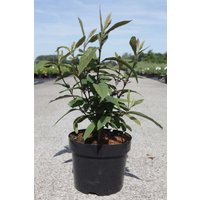 Callicarpa kwangtungensis produces clumps of soft pink flowers from July onwards, followed in autumn by glistening purple berries. Throughout the growing season the leaves are flushed with an attractive plum hue that matures to pinks and orange for an intense autumn display. This Beauty Bush species is native to China and seldom seen in the
Callicarpa kwangtungensis produces clumps of soft pink flowers from July onwards, followed in autumn by glistening purple berries. Throughout the growing season the leaves are flushed with an attractive plum hue that matures to pinks and orange for an intense autumn display. This Beauty Bush species is native to China and seldom seen in the
Carex ‘Milk Chocolate’
 Carex ‘Milk Chocolate’ is a clump-forming Sedge, grown for its slender, chocolate brown foliage. Each leaf has a delicate pink tinge at its edge, and as autumn approaches the dense foliage turns to attractive shades of orange and brown. Carex ‘Milk Chocolate’ is perfect for adding texture and winter interest to the garden. This superb,
Carex ‘Milk Chocolate’ is a clump-forming Sedge, grown for its slender, chocolate brown foliage. Each leaf has a delicate pink tinge at its edge, and as autumn approaches the dense foliage turns to attractive shades of orange and brown. Carex ‘Milk Chocolate’ is perfect for adding texture and winter interest to the garden. This superb,
Carex morrowii ‘Fisher’s Form’
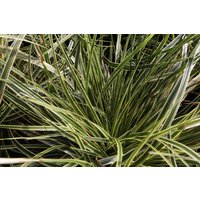 Carex morrowii ‘Fisher’s Form’ is a handsome Sedge, with narrow green foliage edged with cream, contrasting margins. It has a compact, clump-forming habit with stiff and upright leaves that arch gently as they lengthen. Small, green flower spikes rise up through the foliage in late spring. An attractive perennial grass, ‘Fisher’s Form’ is evergreen, and
Carex morrowii ‘Fisher’s Form’ is a handsome Sedge, with narrow green foliage edged with cream, contrasting margins. It has a compact, clump-forming habit with stiff and upright leaves that arch gently as they lengthen. Small, green flower spikes rise up through the foliage in late spring. An attractive perennial grass, ‘Fisher’s Form’ is evergreen, and
Caryopteris x clandonensis ‘Grand Bleu’
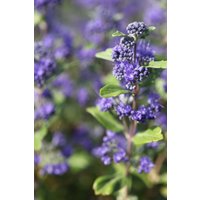 Caryopteris x clandonensis ‘Grand Bleu’ is a French-bred variety, spectacular in late summer and autumn when its intense blue flowers smother the tips of each stem. ‘Grand Bleu’ has a delightful, rounded habit that forms a neat deciduous shrub in mixed borders, and its nectar-rich blooms are a magnet for pollinating insects in wildlife areas.
Caryopteris x clandonensis ‘Grand Bleu’ is a French-bred variety, spectacular in late summer and autumn when its intense blue flowers smother the tips of each stem. ‘Grand Bleu’ has a delightful, rounded habit that forms a neat deciduous shrub in mixed borders, and its nectar-rich blooms are a magnet for pollinating insects in wildlife areas.
Caryopteris x clandonensis ‘Heavenly Blue’
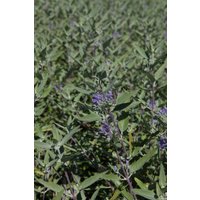 Grown for its intensely dark blue flowers, Caryopteris x clandonensis ‘Heavenly Blue’ adds colour to fading borders in late summer and autumn. This well-known and popular cultivar attracts pollinating insects, and is a useful choice for providing late-season nectar in mixed borders, cottage gardens and wildlife areas. A superb deciduous shrub, Caryopteris x clandonensis is
Grown for its intensely dark blue flowers, Caryopteris x clandonensis ‘Heavenly Blue’ adds colour to fading borders in late summer and autumn. This well-known and popular cultivar attracts pollinating insects, and is a useful choice for providing late-season nectar in mixed borders, cottage gardens and wildlife areas. A superb deciduous shrub, Caryopteris x clandonensis is
Caryopteris x clandonensis ‘White Surprise’
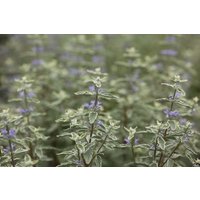 Caryopteris x clandonensis ‘White Surprise’ is a variegated sport of ‘Heavenly Blue’, and makes a showy addition to borders. It creates an eye-catching focal point throughout the summer, with grey-green leaves edged with gleaming white margins. Lavender-blue flowers fill the tips of each stem from August into the autumn, attracting bees and other pollinating insects
Caryopteris x clandonensis ‘White Surprise’ is a variegated sport of ‘Heavenly Blue’, and makes a showy addition to borders. It creates an eye-catching focal point throughout the summer, with grey-green leaves edged with gleaming white margins. Lavender-blue flowers fill the tips of each stem from August into the autumn, attracting bees and other pollinating insects









